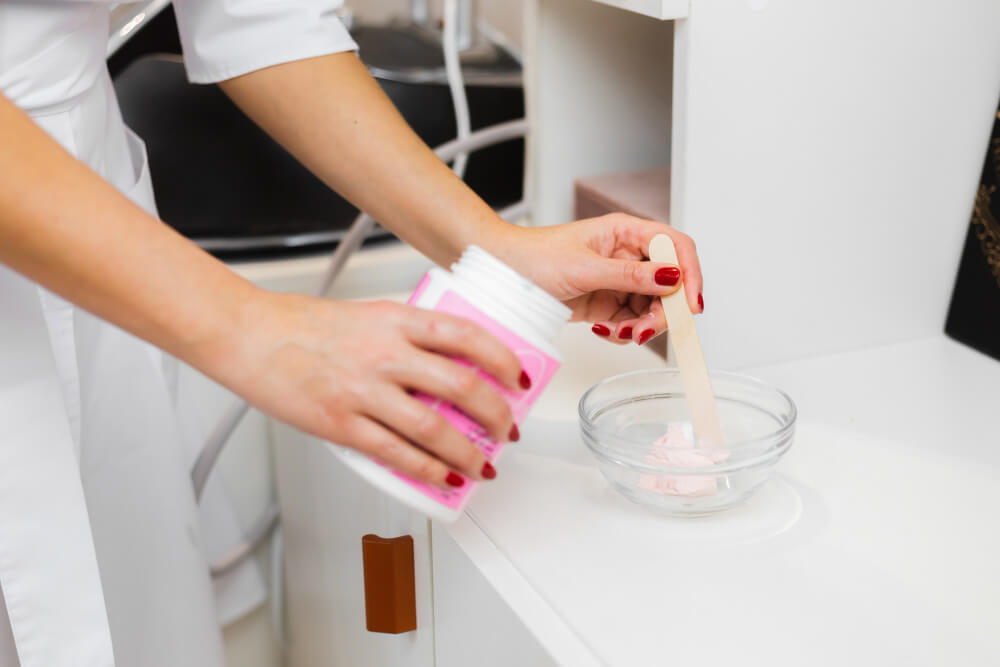- Empty cart.
- Continue Shopping
Homemade Gel Laundry Detergent: Step-by-Step Tutorial

Because conscious and sustainable living is becoming more popular, people are choosing to make their own household products. People are seeing homemade laundry detergent gel becoming popular again. Since people are more concerned about chemicals, plastic waste and costly store cleaning products, making your own laundry solution is better for you and your budget.
Laundry detergent gel made at home is straightforward, treats your clothing gently and can be adjusted to work well for different people and materials. You get to decide exactly what goes into your food, get rid of extra additives and help protect nature by reducing waste from packages. No matter if you are an experienced DIYer or simply want to try homemade detergents, this article will give you the steps to make your own great, green detergents.
Why Make Your Own Gel Laundry Detergent?
Before diving into the recipe, it’s essential to understand why DIY gel detergent has captured the attention of so many households. The main reasons are:
- Cost-Effective Solution
Making laundry detergent gel at home is much less expensive than buying it ready-made at the store. Making detergent is simple and a few low-cost ingredients can make you some to use over weeks or months.
- Environmentally Friendly
If you make your own detergent, it saves plastic waste and lower your use of harmful chemicals. This is a quick thing you can do to lessen your environmental effect at home.
- Gentle on Sensitive Skin
Many commercial detergents contain fragrances and additives that can irritate the skin. Homemade versions allow you to control every ingredient, making them ideal for people with allergies or sensitivities.
- Customizable Formula
Fragrances and other additives in many detergents may irritate your skin. You can tailor homemade products to fit your needs which is good for anyone with allergies or sensitivities.
- Reduces Chemical Exposure
You are able to tweak the detergent based on what you need—for example, adding scents, skipping borax or making the detergent stronger or weaker for different clothes. People can customize fitness as they need.
- Satisfying and Empowering
Most laundry detergents include synthetic dyes, preservatives and surfactants. Using a homemade laundry detergent gel can limit the number of toxic ingredients you use and let into your home and into the water supply.
What You’ll Need: Ingredients and Tools
Ingredients:
- 1 bar of natural soap (Castile soap or any gentle, fragrance-free soap)
- 1 cup washing soda (sodium carbonate)
- ½ cup borax (optional, for stronger cleaning power)
- 4 cups water (for melting soap)
- 8-10 cups hot water (to be added later)
- Essential oils (optional, for fragrance—lavender, lemon, eucalyptus work well)
Tools:
- Cheese grater or knife
- Large pot
- Stirring spoon
- Funnel
- Storage container (reuse old detergent jugs or mason jars)
- Measuring cups
- Blender (optional, for smoother consistency)
Step-by-Step Guide to Making Laundry Detergent Gel
Step 1: Grate the Soap
Grate your soap on a cheese grater to start. If you don’t own a food processor, finely cut the soap into tiny pieces with a knife. Melting happens more quickly as the pieces are ground smaller. The best choice for sensitive washes is a soap with no artificial ingredients.
Step 2: Melt the Soap
Put the grated soap into a large pot together with 4 cups of water. Turn on medium heat and stir the soap occasionally until it all dissolves. Boiling is not necessary; just use gentle heat. The soap base will combine with other substances in the next stage.
Step 3: Mix in Washing Soda and Borax
When the soap is completely melted, put in 1 cup of washing soda and ½ cup of borax (if using at all). Keep stirring until both powders have dissolved completely in the water. It is important at this point, because these elements help your detergent to remove stains and break down oily spots.
Step 4: Add Remaining Water
Transfer the mixture gently in a large bucket or container. Put in 8–10 cups of hot water and mix everything together. When the powders are placed in hot water, they are broken down more and become more effective in cleaning. The detergent will become slightly thicker at this point.
Step 5: Blend (Optional)
When the mixture is slightly warm, put in 20–30 drops of essential oil to get a fragrant detergent. A lot of people pick lavender because it soothes, tea tree for its antibacterial power or lemon for its lovely scent.
Step 6: Add Essential Oils
Leave the detergent in an uncovered place for 6–8 hours or overnight. Letting it sit gives the mixture time to come together in the final state. Eventually, you will notice the mixture thickening which is what gives laundry detergent its gel texture.
Step 7: Let It Sit
Leave the detergent out, uncovered, for 6–8 hours or the whole night. This lets the mixture become smooth and uniform. You will realize that as time continues, the mixture will thicken like real laundry detergent gel.
Step 8: Store and Use
Put gel into containers by using a funnel. Large yogurt containers, mason jars and detergent bottles are perfect for this. Store it where it is both cool and dry.
How to Use Your Homemade Gel Detergent
It’s just as convenient to use homemade laundry detergent gel as store-bought one and you know every ingredient at all times. After your gel is stored and ready, measure the correct portion for any kind of washing to ensure you use just the right amount.
- For regular loads: Use ½ cup of gel detergent per load. This amount is sufficient for everyday clothes that are lightly soiled.
- For heavily soiled laundry: Use ¾ cup to 1 full cup per load. Clothes with stubborn stains, mud, or sweat buildup may require a higher concentration for a thorough clean.
- For high-efficiency (HE) machines: Use only ¼ cup per load. These machines use less water, so a small amount of concentrated detergent is enough to do the job.
Before use, give the container a good shake to even out the active ingredients. When the detergent becomes very thick with time, stir in a tiny amount of warm water to make it less thick. You can make laundry scent better by putting a few drops of essential oil in the drawer or including white vinegar in the wash to act as natural softener.
The gel is fine to use in top-loaders and front-loaders and it won’t damage most types of fabric such as delicate, towel and baby clothes. Do not add too much to the machine and if something is very dirty, wash it in warm or hot water to get the best cleaning effect. Applying your homemade gel regularly allows you to have fresh and clean clothes, but without the added chemicals or the expense of ready-made laundry detergents.
Effectiveness: How Does It Compare?
Even though homemade gel detergent is made at home, it does the job well. Soap cleans, washing soda helps soften the water and improve cleaning and borax (where used) functions as a natural bleaching and deodorization agent.
A lot of people say their white clothes are brighter, clothes smell cleaner and their skin is less irritated now that they use homemade options. Being sure about what products touch your skin is quite satisfying too.
Tips to Customize Your Recipe
The flexibility you get from making laundry detergent gel is one of its main advantages. Based on what you wash and the water available to you, you can change the amount of detergent or enzyme to reach your desired results.
- For soft water: When you have soft water in your machine, often you won’t need to add borax to get good results. Since soft water already removes buildup, using less borax helps you make a gentle formula that is still very effective.
- For hard water: Your detergent may not be able to clean well with hard water. In order to improve this, use slightly more washing soda or mix in a little bit of white vinegar during rinsing.
- For baby laundry: Because infants’ skin is very sensitive, try to use a formula that is gentle and avoids irritating ingredients. Choose pure Castile soap, don’t add in essential oils or borax and consider rinsing your laundry items twice to be sure all the soap is gone.
- For color protection: Add a spoonful of baking soda to your special mixture to brighten the colors and stop them from fading. It makes water more transparent, helps the water’s pH and reduces bad odors gently.
- For a fresh scent: Even if optional, installing a few drops of lavender, lemon or eucalyptus oil can help your clothes have an amazing scent, without using artificial scents. Carefully test that any oils are suitable for your skin and don’t overuse them.
- For thicker gel consistency: When you desire a runnier texture, just add a little extra water or keep blending the final mix to give it a smoother and denser finish. It prevents the ingredients from separating as time goes by.
Precautions and Storage Tips
- Store the detergent in an airtight container.
- Avoid using metal containers as they may react with the soap or soda.
- Keep out of reach of children and pets.
- If the gel separates over time, simply shake the container or stir it to re-emulsify.
Comparing Homemade and Commercial Gels
While there is some practicality and aesthetic to making your own detergent, some users prefer to just buy a heavy-duty liquid detergent gel such as Wiz Laundry Detergent Gel. These products are concentrated, remove stains quickly, consistently pour, and do not require complex preparation time.
That said, the homemade version is recommended for the thrifty, skin-sensitive, or someone looking to reduce the number of chemicals they use.
Pros and Cons of Homemade Laundry Detergent Gel
Pros:
- Cost-effective
- Customizable
- Eco-friendly and plastic-reducing
- Mild on skin and clothes
- Long-lasting (one batch can last months)
Cons:
- Takes time to prepare
- May not work well in very cold water
- Can leave residue if not dissolved properly
- Needs occasional stirring/shaking
Conclusion
Making your own laundry detergent gel at home is not only a trend; it is part of a movement for sustainability, safety, and better living. This DIY method is great for you whether you are a parent caring for sensitive baby clothes, someone with allergies, or simply trying to save with respect to household expenses.
With just a few ingredients, you can have fresh, clean clothing without the synthetic additives and fillers that many of the commercial products contain. That is not to say that you can’t use these products if you find yourself in a jam. You can still use any of the liquid detergent gel products on the market from reputable companies, as long as you read how they formulated their ingredients.
Take the knowledge you now have and own your life, beginning with your household routines. Start developing a healthier home, one laundry load at a time.

